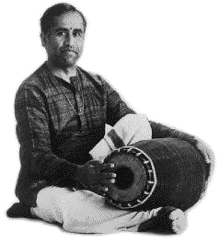 | |
|
Rhythm Ace
A classical percussionist, Indian music scholar and composer, Sankaran is a virtuoso mrdangam player and his mastery of it is respected throughout the world. "The instrument fascinated me ever since childhood," says Sankaran. He started playing at five, began formal training at seven, and made his debut at 13. He's been a concert performer ever since. The mrdangam, with its daunting complexity of rhythmic patterns, demonstrates all intricacies of rhythm vital for South Indian classical music or dance. It is placed horizontally over the lap while sitting cross-legged. Each hand plays a corresponding side in different rhythmic patterns. The drumming requires tireless coordination of arm, wrist and palm, as well as deft and subtle execution of finger techniques, Sankaran explains.Sankaran, who was one of the founders of the Indian Music program at York in the early '70s, says "In those days Indian music was something exotic. Music brings other cultures into perspective and rhythm is the melting point. Rhythm draws people together, it doesn't have cultural barriers or boundaries, it can be experienced by everybody. It is an integral part of communal life and dancing. At the sonic level, rhythm is the breath of life." Right now Sankaran is polishing up two new compositions for his next release, one in the jazz idiom, the other a concerto. The first, scored for mrdangam, sax and piano, is entitled "Jhampalaya". The concerto was premiered in Winnipeg with the Winnipeg Chamber group, Ensemble Mondetta, in April 1997 and broadcast by CBC in June to celebrate the 50th anniversary of India's independence. Sankaran has released three CDs. His most recent, "Lotus Signatures," features traditional South Indian music with a precussion emphasis. "Sundada" was released in 1993, and "Laya Vinyas" in 1990. |
|
Text Menu [ Home | Past Issues | Subscriptions | Contact Us | Site Map | Search Profiles ] |
 People might be sitting in the lotus position looking for spiritual fulfilment these days, but probably not many find it with a12-kg drum in their lap. But York music professor Trichy Sankaran does.
People might be sitting in the lotus position looking for spiritual fulfilment these days, but probably not many find it with a12-kg drum in their lap. But York music professor Trichy Sankaran does.